 Home
Gallery
Contact
Events & Projects
Projects: 2019 On
Film & TV
Archive & Links
Home
Gallery
Contact
Events & Projects
Projects: 2019 On
Film & TV
Archive & Links
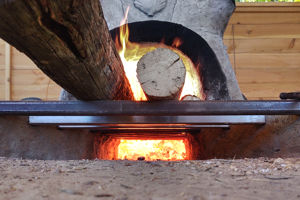
 Home
Gallery
Contact
Events & Projects
Projects: 2019 On
Film & TV
Archive & Links
Home
Gallery
Contact
Events & Projects
Projects: 2019 On
Film & TV
Archive & Links
|

|
2020 Furnace and Lehr at Quarley - Furnace Installation
Projects: 2019 Onwards
Shelter Build
Wood Gathering and Processing
General Preparation
Firepit Construction
Furnace Installation
Lehr Installation
Floodproofing
Firings One and Two
Firing Three
Firing Four
Firing Five
Firing Six
|
Installing the Furnace
We installed the furnace and kiln in the same position relative to each other as we had at Stourbridge, and along the mid line of the shelter. See the first photo on this page. To give an adjustable bed to the furnace we sprinkled sieved soil over thin plastic sheets. This meant that we could line up the various sections of the furnace to give a best-fit. The plastic would burn off when the furnace was fired for the first time. Putting the old firebars in place helped us to line up the top sections with the lower sections. Tightening the tie rod nuts stabilised the furnace, even with the broken top sections. In general, the furnace went back together very well, considering the shrinkage, cracks and breakages resulting from the week-long firing at Stourbridge in August 2019. The next job was to fill all of the splits, joints, cracks and holes in the furnace from the inside by stuffing the spaces with ceramic fibre blanket and sealing them with daub. The tunnel was the final piece to fit. To seal the gaps between it and the furnace wall, we made a gasket from one inch-thick 1400°C grade ceramic fibre blanket. We repaired the two splits in the tunnel by stitching the broken pieces together. We drilled holes next to the splits, threaded lengths of 1.15mm Ni-Chrome wire through the holes and twisted them together. We then filled the splits and covered the wire with daub. We left the roof of the furnace off until we were ready to fire the furnace in earnest (Firing 2). This would help the damp inner firepit and tile walls to dry. Finally, we made some new collars and stoppers, including a 5" collar which proved a very useful size. We also had to make new pots to replace those that cracked at Stourbridge. |
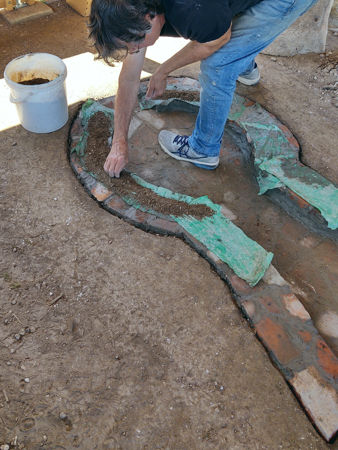
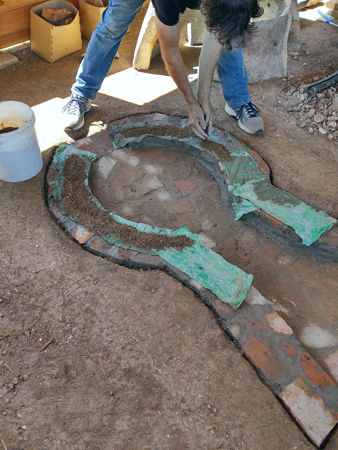
|
|
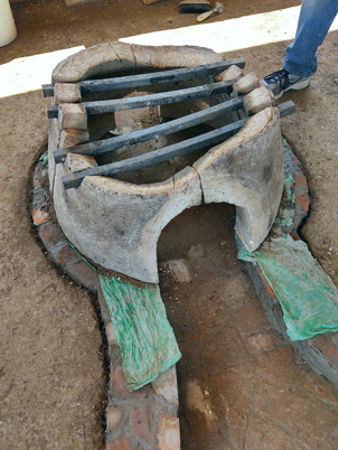
|
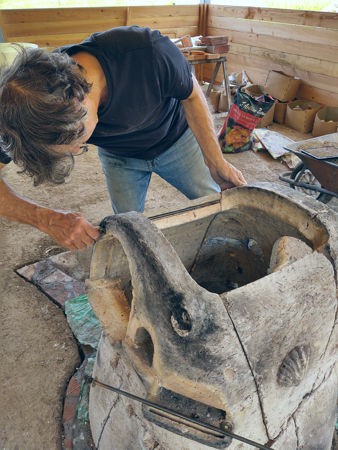
|
|
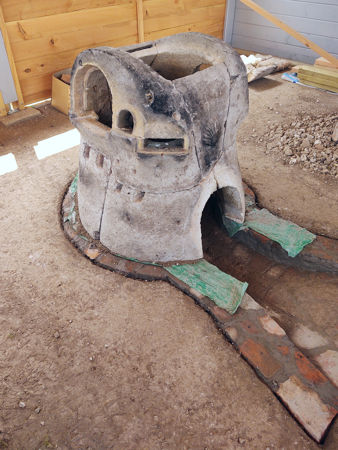
|
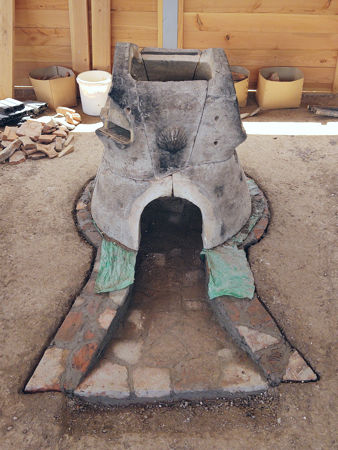
|
|
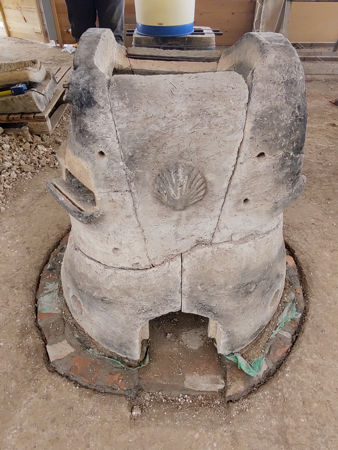
|
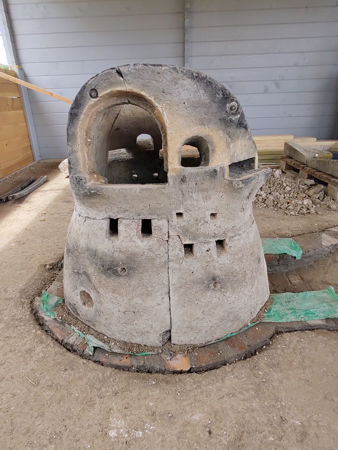
|
|
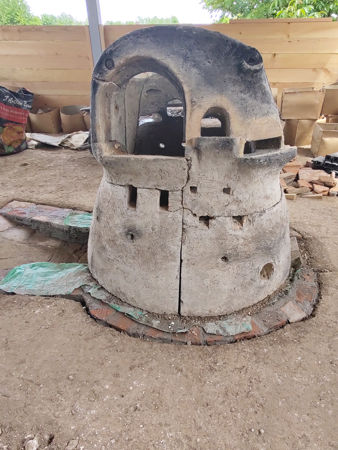
|
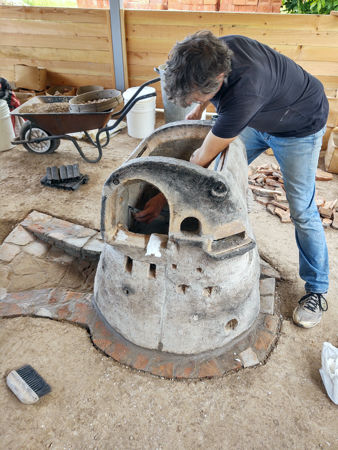
|
|
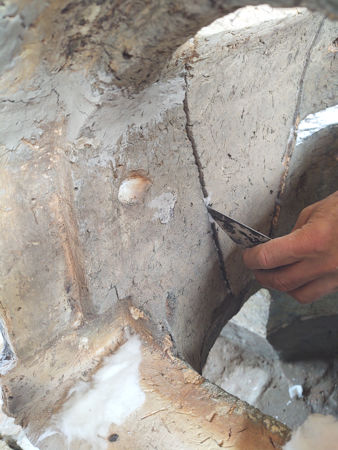
|
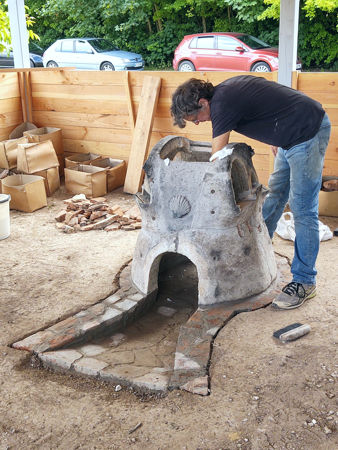
|
|
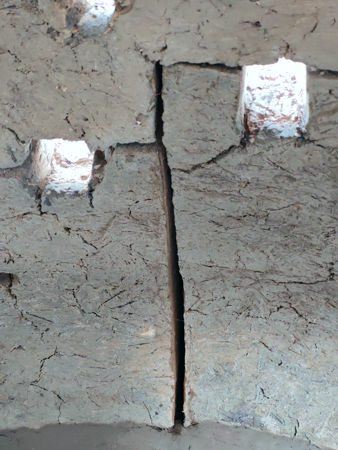
|
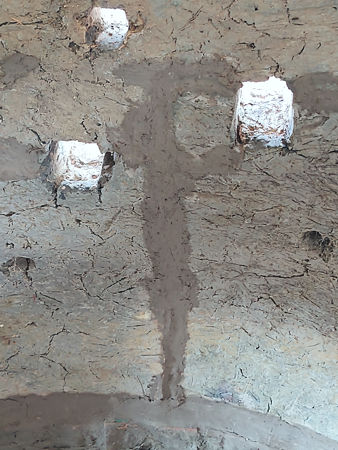
|
|
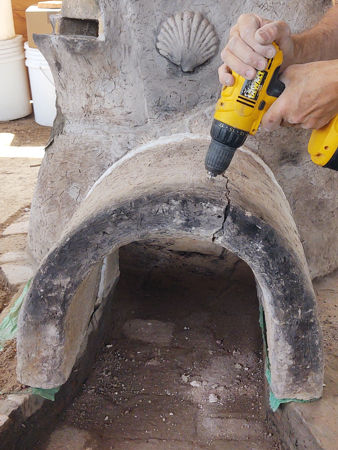
|
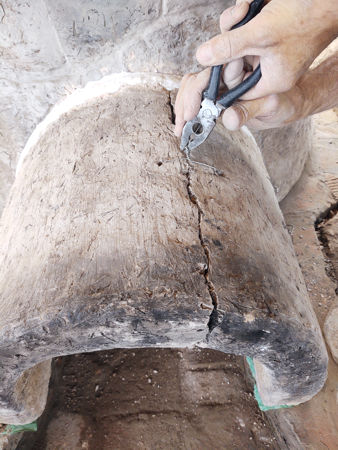
|
|
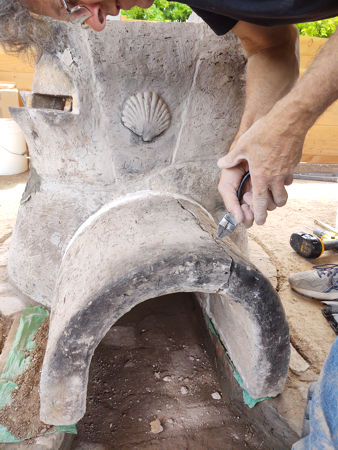
|
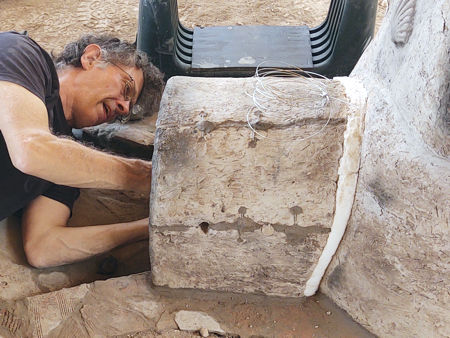
|
|
Replacing the Support Bars
This was a major job, but necessary as the stainless steel firebars had badly bent in the week-long firing at Stourbridge. The high temperatures reached at the hot face in 2019 turned the daub into a very hard ceramic and meant that we could not enlarge the holes individually. Our only option was to completely rebuild these parts of the furnace. The new bars are fired synthetic cordierite tubes of the type used as props in pottery kilns. As bought, they are 60cm long. As the new daub dried we hammered it to counteract the shrinkage and to force it into undercuts to lock it in place. We also replaced the smaller pot supports with cut square-sections of ceramic kiln shelves.After four firings and many rises and falls in temperature, they have all survived with no cracks, bends or breaks. |
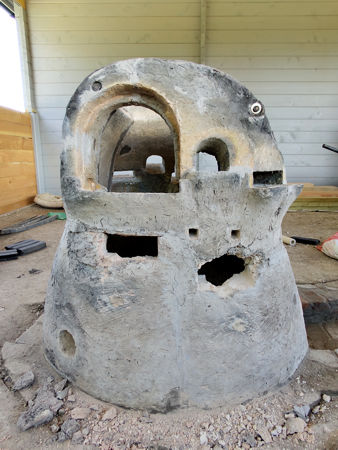
|
|
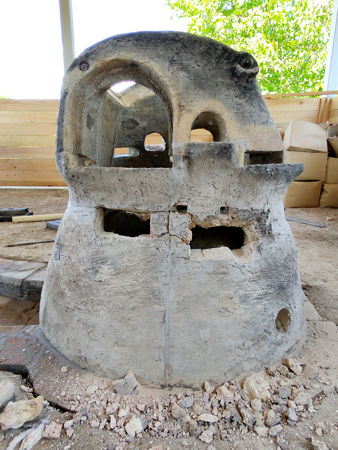
|
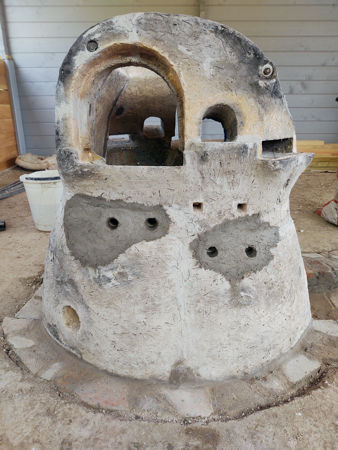
|
|
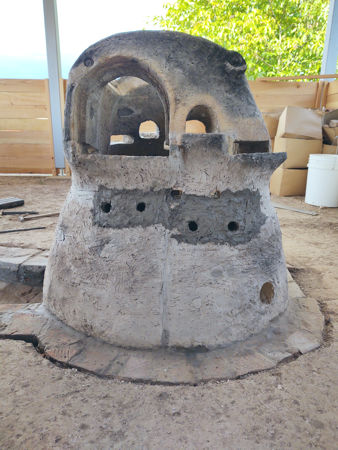
|
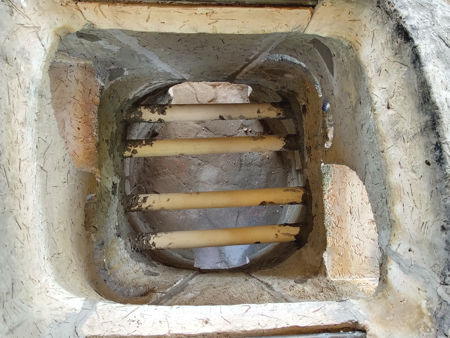
|
|
Making the Grate
We cleaned the tunnel and stokehole, dampened the side walls of the firepit and built a one inch-thick layer of daub next to each wall. We sank each firebar into the daub at 1.5" intervals, neatened it up and allowed it to dry, checking to ensure that the daub did not tighten against the firebars as it shrank. We continued this process, spacing the bars at 3" intervals, to make the grate outside the tunnel. We made the grate able to support three feet-long logs, but in practise we found that 20" lengths were easier to handle and of sufficient length to comfortably fire the furnace. |
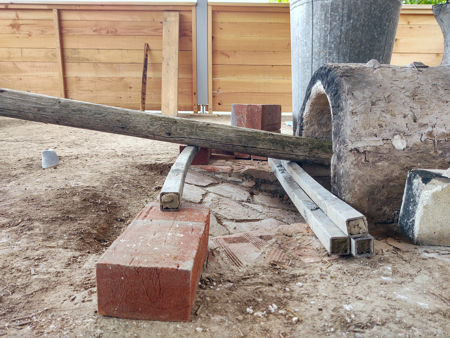
|
|
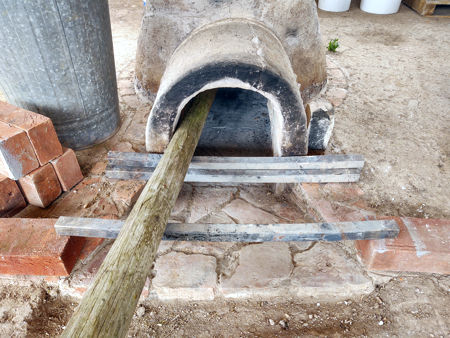
|
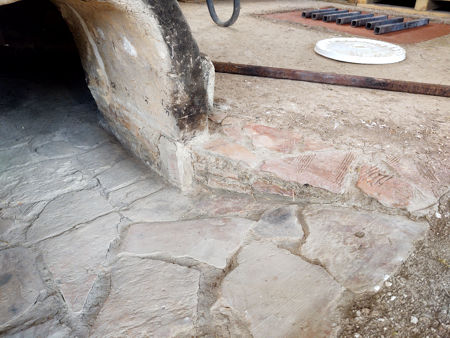
|
|
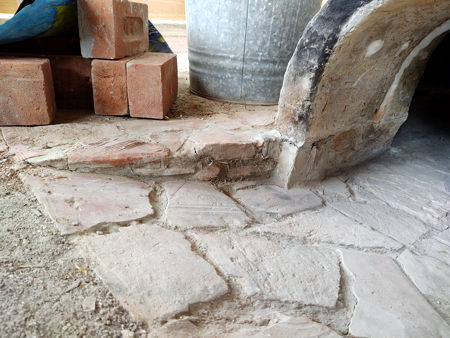
|
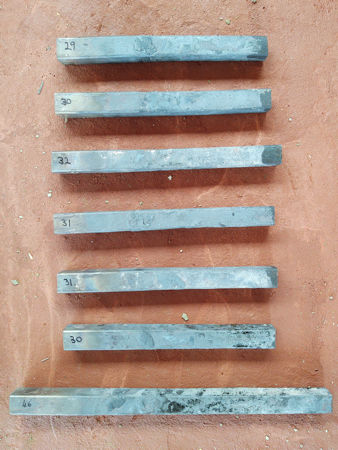
|
|
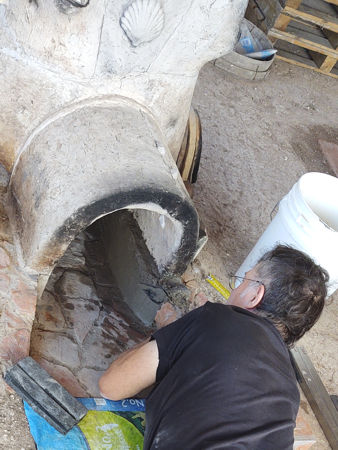
|
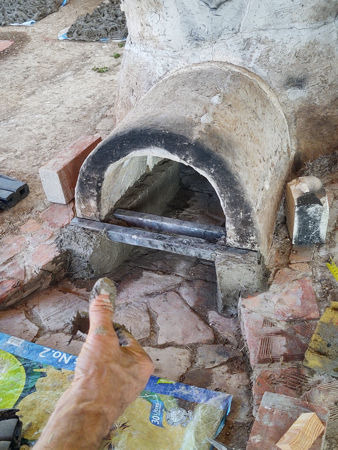
|
|
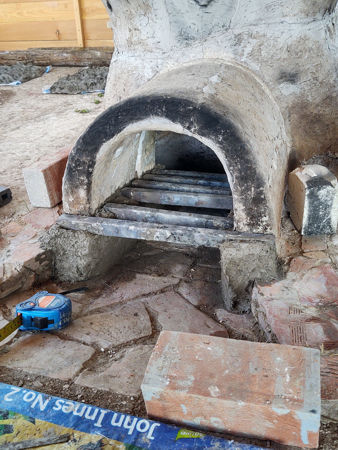
|
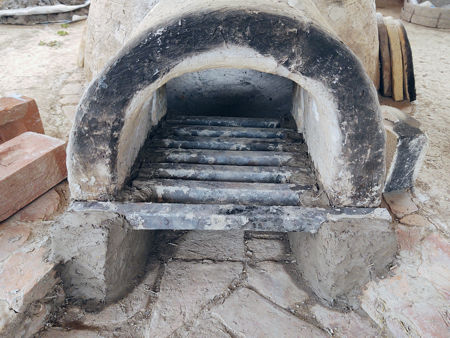
|
|
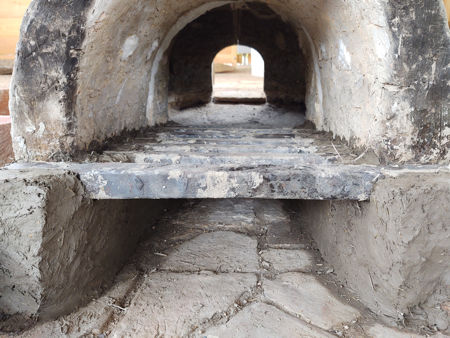
|
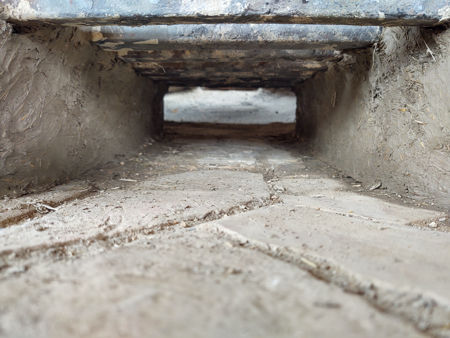
|
|
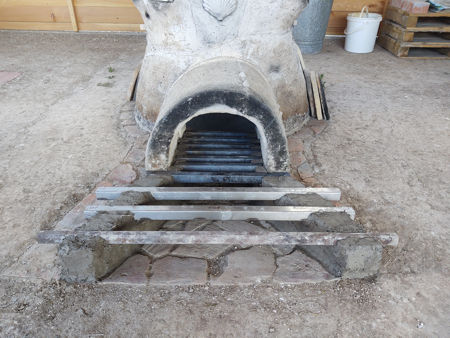
|
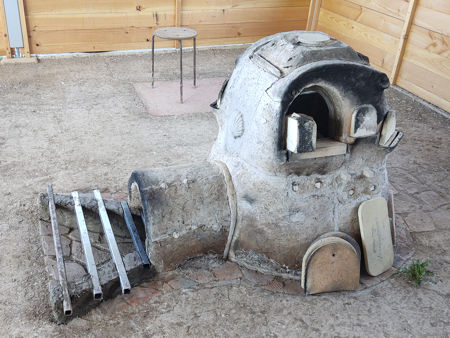
|
|
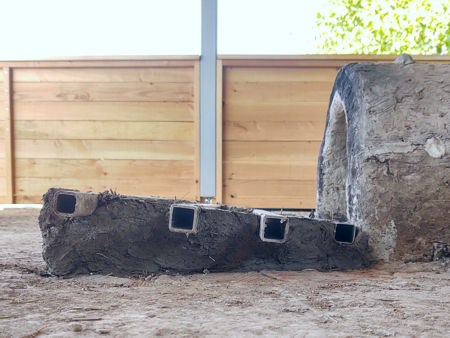
|
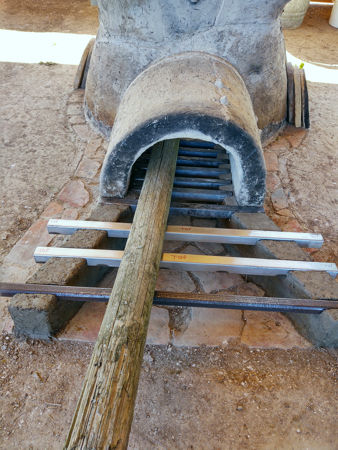
|
|
Extending the Tunnel
Before the third firing we extended the tunnel by about 7" in an effort to control the burn-back we had been experiencing. We underestimated the amount of shrinkage that the daub underwent on drying, so we had to raise the extension by adding two pieces of one inch-thick 1400°C grade ceramic fibre blanket under each side (seen in the final photos). Although this allowed a longer burn length on the grate, so keeping the fire inside the tunnel, it did not cure the burn-back. The likely reason for it is the back-pressure caused by the pots restricting the throughflow of the flames, so increasing the size of the gaps between the pots may help. |
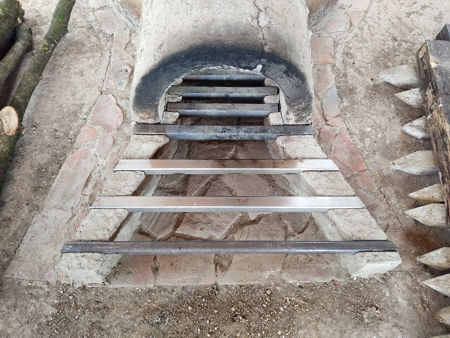
|
|
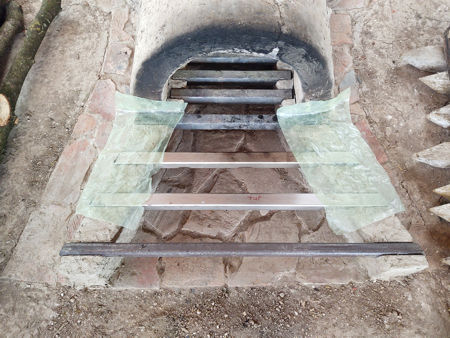
|
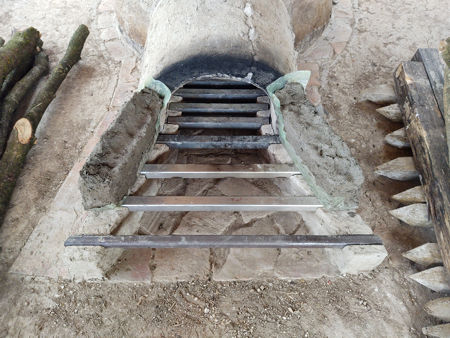
|
|
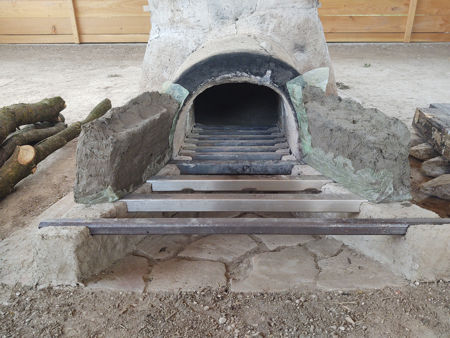
|
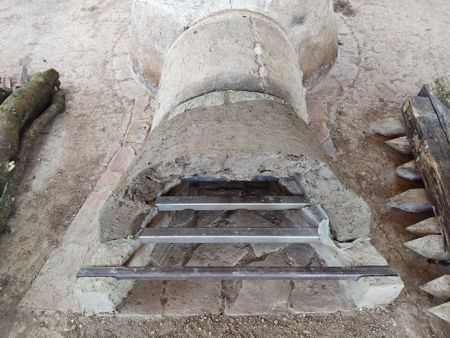
|
|
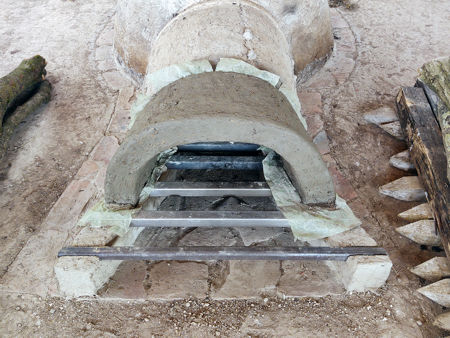
|
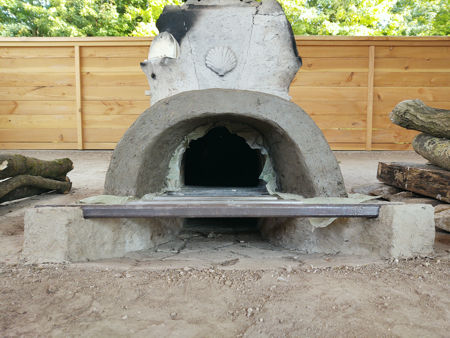
|
|
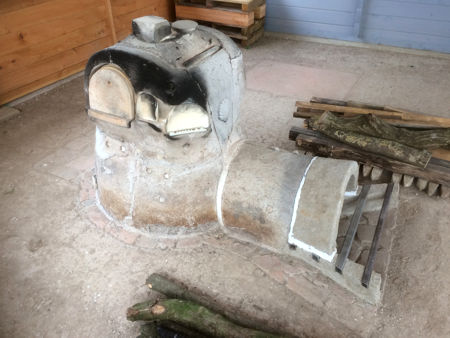
|
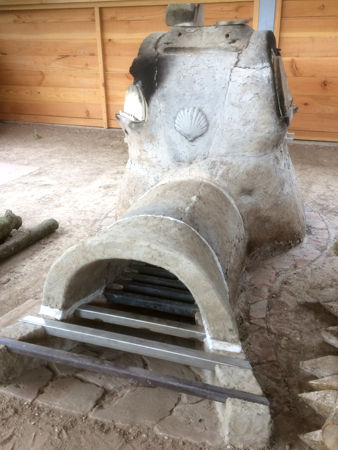
|
Home Gallery Contact Events & Projects Projects: 2019 Onwards Film & TV Archive & Links